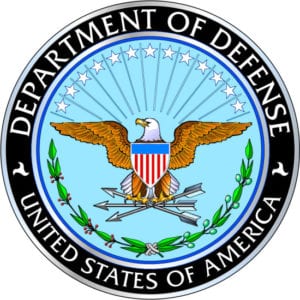 The accreditation of a government facility can be a challenging task. It is imperative that Federal agencies and Government contractors consider the requirements developed by the Interagency Security Committee for federally owned or leased facilities. Delays in getting a facility accredited can cost valuable resources, time and money.
The accreditation of a government facility can be a challenging task. It is imperative that Federal agencies and Government contractors consider the requirements developed by the Interagency Security Committee for federally owned or leased facilities. Delays in getting a facility accredited can cost valuable resources, time and money.
Even further challenges arise when facility assessments are required in order to keep up your certification and accreditation. Consider the following three challenges and pitfalls facing Government contractors, and learn practical applications for avoiding them.
Contracting with an Alarm Service Provider that is not certified to meet the UL 2050 standard. This is typically one of the most common and costly mistakes for a Facility Security Officer, or FSO, who is tasked with a tremendous amount of responsibilities in order to get a space accredited in a specified period of time.
The proper certification for protecting facilities that process classified material is the National Industrial Security Systems, or CRZH listing. A security company that has CRZH certification is authorized to consult, construct, inspect, monitor and certify a Closed Room or Sensitive Compartmented Information Facility (SCIF) within a specified radius of about a 4-hour response time, or 200 miles. Key application points: When contacting an Alarm Service Provider or Security Services Company for a quote, be sure that the company has UL 2050 certification, which is different from a UL certification or a provider of UL alarm systems. If a problem with the system is uncovered during the inspection, which is performed by a certified company, the issue could require the equipment to be removed and reinstalled by a certified company. This process can delay the project and the accreditation, and could mean costly expenses for the FSO.
A listing of National Industrial Security Systems CRZH-listed companies can be found on www.ULalarmfinder.com. 2. Failing to obtain approval from the Cognizant Security Office and Cognizant Security Agency, or CSO/CSA, on an Intrusion Detection or Access Control system design prior to installation. This process is a requirement in DCID 6/9 Annex B 3.1.6 and the NSIPOM section 5-901. By obtaining approval prior to installation, you can potentially avoid additional costs and time delays associated with changing the design and/or parts of the system after installation. Key application points: Obtain approval from the CSO/CSA for an Intrusion Detection or Access Control system prior to installation.
Since the Defense Security Service (DSS) requires a copy of the alarm company’s CRZH compliance certificate, obtain this early on in the project. 3. Utilizing the Intrusion Detection or Access Control systems for areas other than the accredited space. Secure spaces are required not to be left with communication that is not 128 bit encrypted. Because of limitations with the hardware that most security companies use, it prevents the connection of hardware outside of the secure space. Key application points: Choose a company that is UL 2050 certified and familiar with the government standard so that the project is properly installed. If a technical evaluation is performed and improper wiring was installed, facility operations could be shut down until the problem is corrected, causing project delays and costs. If there is cause for concern that an existing system is in violation, contact your provider for an examination. If the systems are connected and the communication is not encrypted, the problem should be resolved as quickly as possible in order to stay in compliance. A proactive Facility Service Officer will stay on top of possible system violations quickly.
We at AAA Alarms (Parent Company Custom Systems, LLC, as listed by UL, pride ourselves with our knowledge of these Department of Defense approved systems that we custom design, install, service and monitor. Call AAA today for free estimate (401) 828-2271
